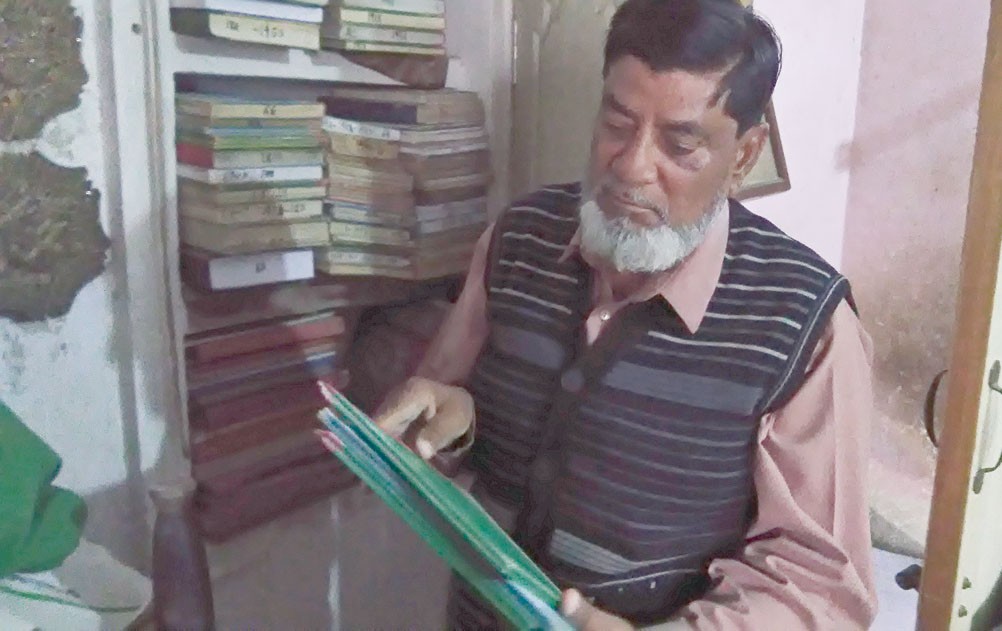
Gulzar Ahmad Ghauri maintains a rare collection of photos, books, coins, and earthenware at his modest place inside Ahmadpuri Gate

Owing to its peculiar Seraiki culture as well a glorious past, Bahawalpur as a city holds a special allure for tourists. The majestic architecture of the palaces of the Abbasi dynasty is mesmerising, to say the least; not to mention the enigma associated with the Cholistan desert. Its palaces, fort, educational institutions, all stand testimony to the times when Bahawalpur was dubbed as one of the most prosperous states of the sub-continent.
But a city is not merely about its buildings and historical landmarks. Its people play an equally important role in shaping a specific temperament of the city. Gulzar Ahmad Ghauri, 71, belongs to that breed of people who take upon themselves the responsibility of remembering and collecting anything related to the social and cultural history of a place. It wouldn’t be wrong to say that the love of Bahawalpur runs in his blood.
His family has lived in the Bahawalpur state for many centuries, inside the Ahmadpuri Gate. Ghauri’s claim to fame is his undying love for everything related to the erstwhile Bahawalpur state: pictures, books, coins, earthen pottery and other paraphernalia.
Initially, he used to collect pictures that he would cut out from newspapers and arrange in a diary. "I started collecting pictures when I was 14," he tells TNS, in an exclusive meeting in his hometown. "My father, a lower grade employee, too had an interest in collecting pictures and coins about our native city and its history. That’s how I became a collector."
Ghauri lives with his extended family in his ancestral house where he has devoted an entire room to his collection. He maintains the collection despite his meagre resources. Although he is not sure about the exact number of pictures he has, there are "nearly 10,000 [pictures]" which he has kept in different albums. Here you can see Bahawalpur and its numerous Abbasi rulers in their glory. You can also learn about the visits of the various world dignitaries to Bahawalpur. Besides, the albums shed light on the life of the various Nawabs who ruled the state.
Then there are rare pictures of the Walled City and many of its places which don’t exist any more. Ghauri says that he "collected these from Lahore, Karachi, and Islamabad, and also got a friend in the UK to send me photocopied images."
Knowing his passion for the Bahawalpur history, Nawab Salahuddin Abbasi, whom he meets off and on in Bahawalpur, has gifted him some pictures and coins from his personal collection. "I have spent thousands of rupees on collecting these. When a small museum was built in Bahawalpur they borrowed the pictures from my collection. I was advised to donate all my pictures and books to the Islamia University, Bahawalpur, but I declined because I can’t imagine parting with my treasure.
"I do hope that one of my
sons will follow in my footsteps and take care of these things after me," he becomes reflective. "I inherited this from my father and I kept on adding to it."
Ghauri also makes it a point to collect every book written on Bahawalpur. No wonder he has managed to cull 3,000 books on the subject. "A number of books are in Urdu and English, but a few are in Persian also; these date back to the early 19th century. For instance, Lala Daulat Ram’s was published in 1825 in Delhi.
"Most of the books are original but sometimes I get photocopies of the rare and old books on Bahawalpur," he reveals. "Reserachers and students often visit me to get some material for their theses etc."
There have been instances when people took away books and never returned them. This has made Ghauri grow skeptic about lending over time.
Earlier, he would hang the old pictures on Ahmadpuri Gate outside his house but not any more, because "the people would feel sad by looking at these vintage photos of the Bahawalpur state."
Ghauri has held many exhibitions of his pictures, coins at different cultural festivals in the city.